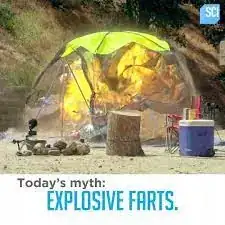My organolithium environment planet needs to be chemically stabilized
But I don't know which compounds could physically evolve on a planet to form an atmosphere and seas wherein humans would spontaneously detonate.
The working title for the story is The Amazing Bob Burns. The basic parameters needed for the story to work are:
- It is a planet formed by natural (or theorized) forces
- It has a liquid layer (seas) and a gas layer (atmosphere)
- The seas and atmosphere can co-exist with the correct pressure/temperature/climate combination, which is not artificial
- People blow up
- Would be nice to have abundant trifluorogold and Gold pentafluoride salts in the land (or at least accessible to the upper crust)
This isn't asking for hard-science but I want to build it with the absolute lowest dosage of hand-wavium I can get away with. So, you're welcome to put just a little $\ ^{42.3} _{97.6} \text{Fu}^\pm $ Fudgium into the mix. Otherwise, shoot for a science-based solution.
By blow up, I mean at a minimum, they burst into violent flames such as would happen in a bath of chlorine trifluoride.
